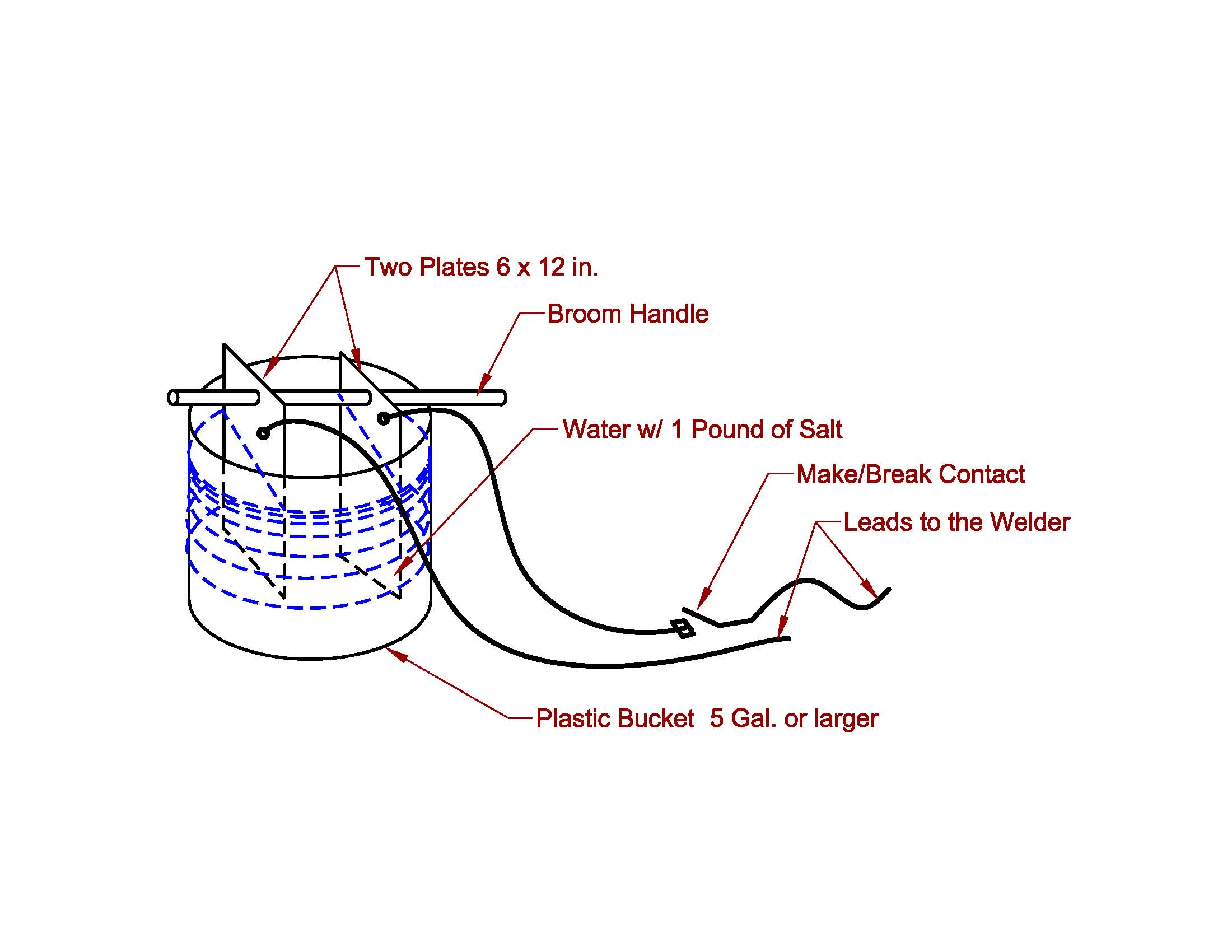I figured someone would ask.
Use a 5 gallon plastic bucket or garbage container; nonconductive, bigger is better.
Fill with water to within several inches of the top edge of the container.
Mix in salt, 1 pound for every 5 to 10 gallons of water. Make sure the salt dissolves completely. It is what makes the water conductive.
Find two plates; steel, aluminum, copper, it doesn't really matter. The bigger the better as long as they fit into the container and can be moved several inches apart. 6 inches wide X 10 or 20 inches in length, as long as they don't hit the bottom of the container.
Punch holes in the plates or make a loops from rod stock so you can suspend the plates from a broom handle or other nonconductive material. Keep in mind that the water is going to boil and get the wooden handle wet if it is too close to the water. That isn't good! This is where the garbage container is better than a 5 gallon bucket, but the bucket is better than a sharp stick in the eye.
Construct a Make/Break switch and place it in the circuit. I use a piece of scrap plate and a large diameter welding rod or carriage bolt. This is so you can break the circuit and prevent the welding machine from cooking and going up in a puff of fire and smoke.
Place the plates as far from each other as possible in the salt water. Set the machine at its lowest setting and make contact with the Make/Break switch. Check the voltage and amperage. As you move the plates closer together, the resistance will decrease and allow the voltage to drop and the current to rise. Set the machine to the next higher range and repeat the process starting with the plates as far apart as possible. You can also lift the plates out of the water as a means of controling the current. Lift them out: low current, drop them in: higher current.
Compare the meters on the machine to your calibrated standard (multimeter and clamp-on tongs for most of us). If they are within 10% of the full range, that is usually considered "good enough".
This process creates oxygen and hydrogen gas. It is an explosive combination, so do this outside, not in your shop, garage, kitchen, or bedroom (unless you are looking for a new spouse). The water will bubble and roil and it will generate plenty of heat, so keep your hands out of the water. There will be a pop or a bang or an explosion when you allow the plates to strike each other depending on the amount of gas generated. The amount of gas generated is dependent on the power, i.e., volts x amps.
It is exciting, it's fun, the kids will love it, the dogs will howl, the wife will scream; "Are you crazy? Are you trying to kill us all?"
She has a valid point.
Good luck.
Best regards - Al




